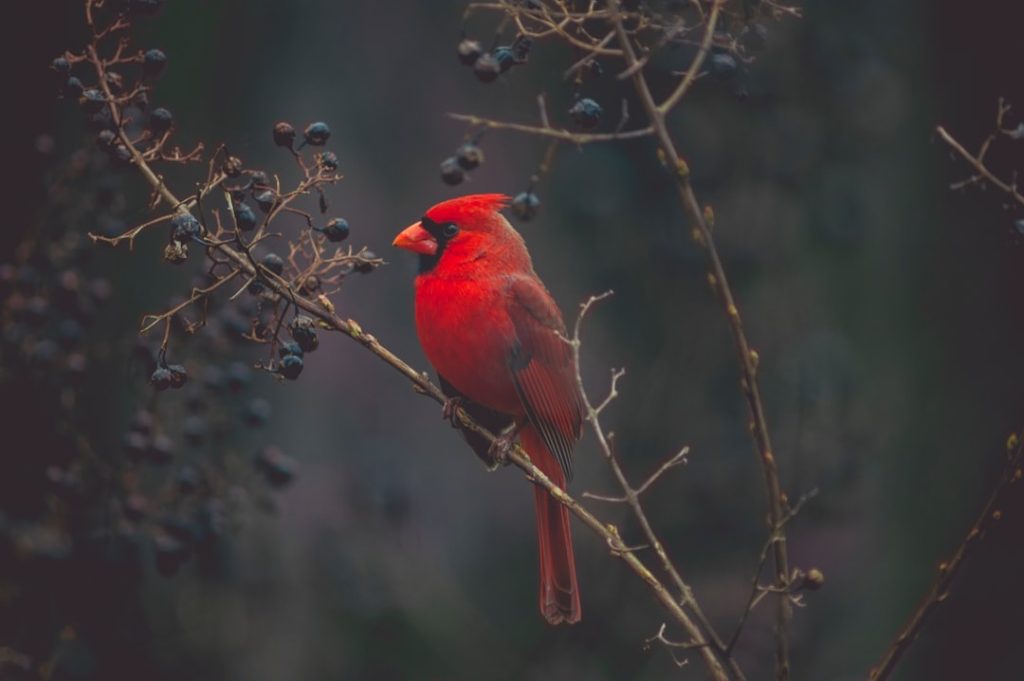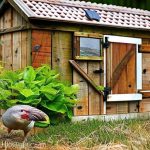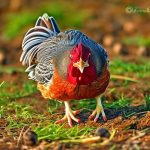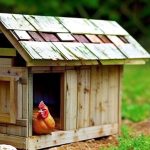Hawks are birds of prey renowned for their exceptional vision and powerful talons. As skilled hunters, they can capture various prey, including small mammals and birds. Backyard chickens are often targeted by hawks due to their vulnerability.
Identifying hawks is crucial for protecting poultry flocks. Typically, hawks are medium to large birds characterized by broad wings and long tails. They possess sharp, hooked beaks and strong talons for catching and killing prey.
Hawks are frequently observed soaring at high altitudes while searching for food. North America is home to several hawk species, such as the red-tailed hawk, Cooper’s hawk, and sharp-shinned hawk. While each species has distinct features, all pose potential threats to chickens.
Hawks are opportunistic predators that exploit any available food source. They are known for their stealthy approach and patience, waiting for the ideal moment to attack. These adaptable birds inhabit diverse environments, from open fields to suburban areas.
Hawks are protected under the Migratory Bird Treaty Act, making it illegal to harm or kill them without proper authorization. This legal protection complicates efforts to manage hawks threatening chickens, but non-lethal deterrent methods are available. Understanding hawk behavior and characteristics is essential for implementing effective measures to safeguard chickens from these formidable predators.
Table of Contents
- 1 Creating a Safe Environment for Your Chickens
- 2 Implementing Visual Deterrents
- 3 Utilizing Sound Deterrents
- 4 Installing Physical Barriers
- 5 Supervising Free Range Time
- 6 Seeking Professional Help
- 7 FAQs
- 7.1 What are some natural ways to keep hawks away from chickens?
- 7.2 Are there any predator deterrent devices that can help keep hawks away from chickens?
- 7.3 What should I do if I spot a hawk near my chicken coop?
- 7.4 Are there any legal methods to keep hawks away from chickens?
- 7.5 What should I do if a hawk attacks one of my chickens?
Key Takeaways
- Hawks pose a threat to chickens and can be identified by their sharp talons, hooked beaks, and keen eyesight
- Creating a safe environment for chickens involves providing adequate shelter, secure fencing, and keeping the area clean and free of potential hiding spots for hawks
- Visual deterrents such as scarecrows, reflective objects, and predator eye balloons can help deter hawks from targeting chickens
- Sound deterrents like wind chimes, predator calls, and radios can help scare off hawks from the chicken coop area
- Installing physical barriers like netting, wire mesh, and overhead covers can provide additional protection for chickens from hawk attacks
- Supervising free range time for chickens can help ensure their safety from hawk attacks, especially during peak hunting times
- Seeking professional help from wildlife experts or bird control specialists can provide additional guidance and support in protecting chickens from hawk threats
Creating a Safe Environment for Your Chickens
Secure Coop and Run
One of the most important steps you can take is to provide your chickens with a secure coop and run. The coop should be constructed of sturdy materials and have a solid roof to prevent hawks from swooping down and snatching your chickens. The run should also be covered with wire mesh to keep hawks and other predators out.
Regular Inspections and Maintenance
It’s essential to regularly inspect the coop and run for any signs of damage or weakness, as hawks are opportunistic and will take advantage of any vulnerabilities. This will help you identify and address any potential entry points for predators.
Providing Hiding Spots and Cover
In addition to a secure coop and run, it’s also important to provide your chickens with plenty of hiding spots and cover. This can include dense shrubs, trees, or other structures that provide protection from aerial predators like hawks. By creating a diverse and natural environment for your chickens, you can help them feel safe and secure. Providing plenty of food and water is also crucial, as well-fed and hydrated chickens are better equipped to defend themselves against predators.
By creating a safe and comfortable environment for your chickens, you can help minimize the risk of hawk attacks and ensure the well-being of your flock.
Implementing Visual Deterrents

Visual deterrents can be an effective way to deter hawks from targeting your chickens. One common visual deterrent is the use of scarecrows or other human-like figures placed in the chicken’s environment. Hawks are wary of humans and will often avoid areas where they see human activity.
By placing scarecrows or other human-like figures in your chicken’s environment, you can create the illusion of human presence and deter hawks from approaching. Another visual deterrent that can be effective is the use of reflective objects, such as shiny tape or CDs, hung around the chicken’s enclosure. The reflective surfaces can startle hawks and make them think twice about approaching your property.
Another visual deterrent that can be effective is the use of predator decoys, such as plastic owls or hawks. These decoys can create the illusion of a larger predator in the area, which can deter hawks from approaching. It’s important to regularly move the decoys around to prevent hawks from becoming accustomed to them.
By implementing visual deterrents, you can help create a hostile environment for hawks and reduce the risk of attacks on your chickens.
Utilizing Sound Deterrents
Sound deterrents can also be an effective way to deter hawks from targeting your chickens. One common sound deterrent is the use of noise-making devices, such as air horns or whistles, that can startle hawks and make them think twice about approaching your property. Another sound deterrent that can be effective is the use of recorded distress calls from other birds or prey animals.
Hawks are territorial animals and will often avoid areas where they hear the distress calls of potential competitors or predators. Another sound deterrent that can be effective is the use of radios or other devices that emit loud noises or music. The constant noise can create an uncomfortable environment for hawks and deter them from approaching your property.
It’s important to regularly change the type of noise being emitted to prevent hawks from becoming accustomed to it. By utilizing sound deterrents, you can help create a hostile environment for hawks and reduce the risk of attacks on your chickens.
Installing Physical Barriers
Installing physical barriers can be an effective way to protect your chickens from hawk attacks. One common physical barrier is the use of netting or wire mesh over the chicken’s enclosure. This can prevent hawks from swooping down and snatching your chickens.
It’s important to ensure that the netting or wire mesh is securely fastened and free from any gaps or weaknesses that hawks could exploit. Another physical barrier that can be effective is the use of overhead structures, such as awnings or shade cloth, that provide cover for your chickens. This can make it more difficult for hawks to spot and target your chickens from above.
It’s important to regularly inspect these structures for any signs of damage or weakness, as hawks are opportunistic and will take advantage of any vulnerabilities. By installing physical barriers, you can help create a secure environment for your chickens and reduce the risk of hawk attacks.
Supervising Free Range Time

Supervise and Intervene
Supervising your chicken’s free range time can be an effective way to protect them from hawk attacks. When chickens are allowed to roam freely, they are more vulnerable to aerial predators like hawks. By supervising their free range time, you can keep an eye out for any signs of danger and intervene if necessary.
Stay Vigilant and Prepared
It’s important to regularly scan the sky for any signs of hawks or other predators and be prepared to quickly gather your chickens if a threat is detected.
Provide Hiding Spots and Cover
Another way to protect your chickens during free range time is to provide them with plenty of hiding spots and cover. This can include dense shrubs, trees, or other structures that provide protection from aerial predators like hawks.
Create a Safe Environment
By creating a diverse and natural environment for your chickens, you can help them feel safe and secure during their free range time. By supervising your chicken’s free range time, you can help minimize the risk of hawk attacks and ensure the well-being of your flock.
Seeking Professional Help
If you have tried various deterrent methods but continue to experience hawk attacks on your chickens, it may be time to seek professional help. There are wildlife experts and pest control professionals who specialize in dealing with bird predators like hawks. They can assess your property and recommend specific strategies for deterring hawks and protecting your chickens.
One option that professionals may recommend is the use of bird netting or wire mesh specifically designed to keep hawks out of chicken enclosures. These professionals may also have access to more advanced sound deterrents or visual deterrents that are proven to be effective against hawks. In some cases, professionals may also be able to obtain permits for more aggressive deterrent methods, such as trapping and relocating problem hawks.
It’s important to work with professionals who are knowledgeable about local wildlife laws and regulations in order to ensure that any deterrent methods used are legal and ethical. In conclusion, protecting your chickens from hawk attacks requires a multi-faceted approach that includes understanding the behavior of hawks, creating a safe environment for your chickens, implementing visual and sound deterrents, installing physical barriers, supervising free range time, and seeking professional help when necessary. By taking these steps, you can help minimize the risk of hawk attacks on your chickens and ensure their safety and well-being.
If you’re looking for ways to keep your chickens safe from predators, you may also be interested in learning how to care for goslings. Check out this article for tips on raising healthy and happy geese.
FAQs
What are some natural ways to keep hawks away from chickens?
Some natural ways to keep hawks away from chickens include using scare tactics such as hanging shiny objects, using noise makers, and having a rooster to alert the flock of danger. Providing cover for the chickens to hide under and using netting or wire to cover the chicken run can also help deter hawks.
Are there any predator deterrent devices that can help keep hawks away from chickens?
Yes, there are predator deterrent devices such as motion-activated sprinklers, predator decoys, and predator-proof fencing that can help keep hawks away from chickens. These devices can startle and deter hawks from approaching the chicken coop or run.
What should I do if I spot a hawk near my chicken coop?
If you spot a hawk near your chicken coop, it’s important to take immediate action to protect your chickens. You can use scare tactics such as making loud noises, waving your arms, or using a water hose to deter the hawk. It’s also important to ensure that your chickens have cover to hide under and that the coop is secure.
Are there any legal methods to keep hawks away from chickens?
Yes, there are legal methods to keep hawks away from chickens. It is legal to use scare tactics, predator deterrent devices, and secure fencing to protect your chickens from hawks. However, it is important to check local regulations and laws regarding the protection of birds of prey before taking any action.
What should I do if a hawk attacks one of my chickens?
If a hawk attacks one of your chickens, it’s important to act quickly to protect the injured chicken and prevent further attacks. You can provide immediate medical attention to the injured chicken and relocate the flock to a safer area if possible. It’s also important to report the incident to local wildlife authorities if necessary.
Meet Walter, the feathered-friend fanatic of Florida! Nestled in the sunshine state, Walter struts through life with his feathered companions, clucking his way to happiness. With a coop that’s fancier than a five-star hotel, he’s the Don Juan of the chicken world. When he’s not teaching his hens to do the cha-cha, you’ll find him in a heated debate with his prized rooster, Sir Clucks-a-Lot. Walter’s poultry passion is no yolk; he’s the sunny-side-up guy you never knew you needed in your flock of friends!







